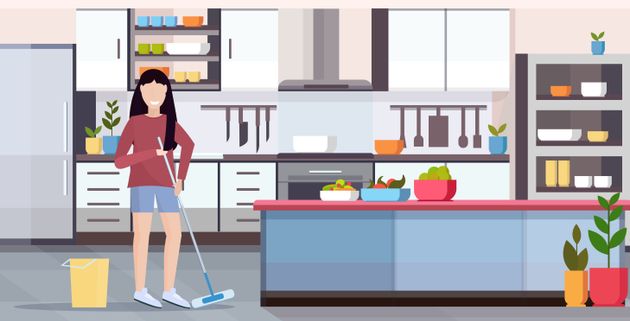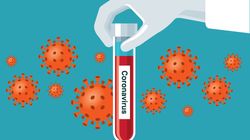
See the latest stories on the coronavirus outbreak.
People with horrible coughs, fevers and trouble breathing aren’t driving the coronavirus pandemic. It’s people with mild symptoms or no symptoms at all who are responsible for the majority of new COVID-19 cases, according to research published recently.
People who work in essential jobs have an especially high chance of being exposed to SARS-CoV-2, the technical name for the virus that causes COVID-19, and bringing it home. Since it’s so hard to tell who’s carrying the virus before symptoms show, key workers’ families, partners, and roommates are at an increased risk of being exposed in shared spaces, where it can survive for hours to days.
Researchers still don’t know a lot about SARS-CoV-2, but they’ve studied similar viruses and know their weaknesses. A team of scientists and architects have scoured that research and have written a guide for making your indoor space as unfriendly to the virus as possible.
Here are a few quick and easy tips from that guide and from experts that you can use at home.
Remove clutter from around the sink and disinfect counters regularly.
Washing your hands is the most important thing you can do to protect yourself and everyone else from COVID-19. You should do it often ― some examples of good times are when you return from being outside, after you’ve touched a potentially infected surface, after you use the bathroom and before you eat.
Hand washing fights the virus in two ways: It completely destroys some copies of the virus, and nearly all that survive come off your hands and go down the drain.
However, some survivors can hitch a ride in minuscule water droplets that fly into the air during hand washing. Removing clutter from around your sink limits the surface area where they can land and survive, and occasionally disinfecting the counter will keep them from infecting anyone.
Make sure you also regularly disinfect surfaces that are frequently touched, like countertops, doorknobs and faucet handles.
Open a window.
Increasing the amount of fresh air coming into your home will help flush out indoor contaminants, including viral particles in the air. Researchers aren’t sure how many people are getting sick from inhaling airborne copies of SARS-CoV-2, but they’re increasingly concerned that the virus can spread through particles that remain suspended in the air for up to a half-hour.
“A little fresh air can do your body good, and we think there’s evidence it can do your building good as well,” said Kevin Van Den Wymelenberg, a co-author of the guide and a professor at the School of Architecture and Environment at the University of Oregon. “It’s a simple strategy that we have access to in most buildings and homes.”
Use a humidifier to keep indoor humidity between 40% and 60%.
Recent research shows that high temperature and high relative humidity may reduce the transmission of COVID-19.
Boosting the percentage of water molecules in the air can help in a few ways, according to the guide’s authors. Those water molecules may damage the outer membrane of the virus, making it viable for a shorter amount of time. They also make the tiny droplets that viruses live in heavier, which causes them to fall out of the air more quickly.
The humidity also affects how well your body can defend itself against pathogens and other particles, including viruses. A coronavirus gets into the body through mucous membranes, like your eyes, nose, and mouth. Indoor air tends to dry out those membranes, making your body more vulnerable to pathogens. Keeping the humidity a little bit higher allows your body’s first line of defence to work at its optimum level.

Open blinds and shades.
Letting sunlight stream into your home is another way to put some pressure on viruses that have made their way inside. UV light damages most microorganisms and viruses, including coronaviruses closely related to SARS-CoV-2.
“We have evidence in the literature that sunlight can inactivate influenza viruses and other viruses,” said Mark Fretz, another of the guide’s co-authors and a research assistant professor at the University of Oregon’s College of Design. “It’s also good for your psychological well being.”
Don’t forget to clean the items you use every day.
This includes disinfecting your phone, carefully washing your clothes, and cleaning your reusable grocery bags.
We’re all having to make really big changes to slow the spread of COVID-19. These recommendations are no replacement for hand washing and social distancing, but they might still make a small difference. With so much uncertainty surrounding the pandemic, having even a little more control might get us through this a little bit easier.




